Maui - Cross Platform Native Apps
2024-06-11
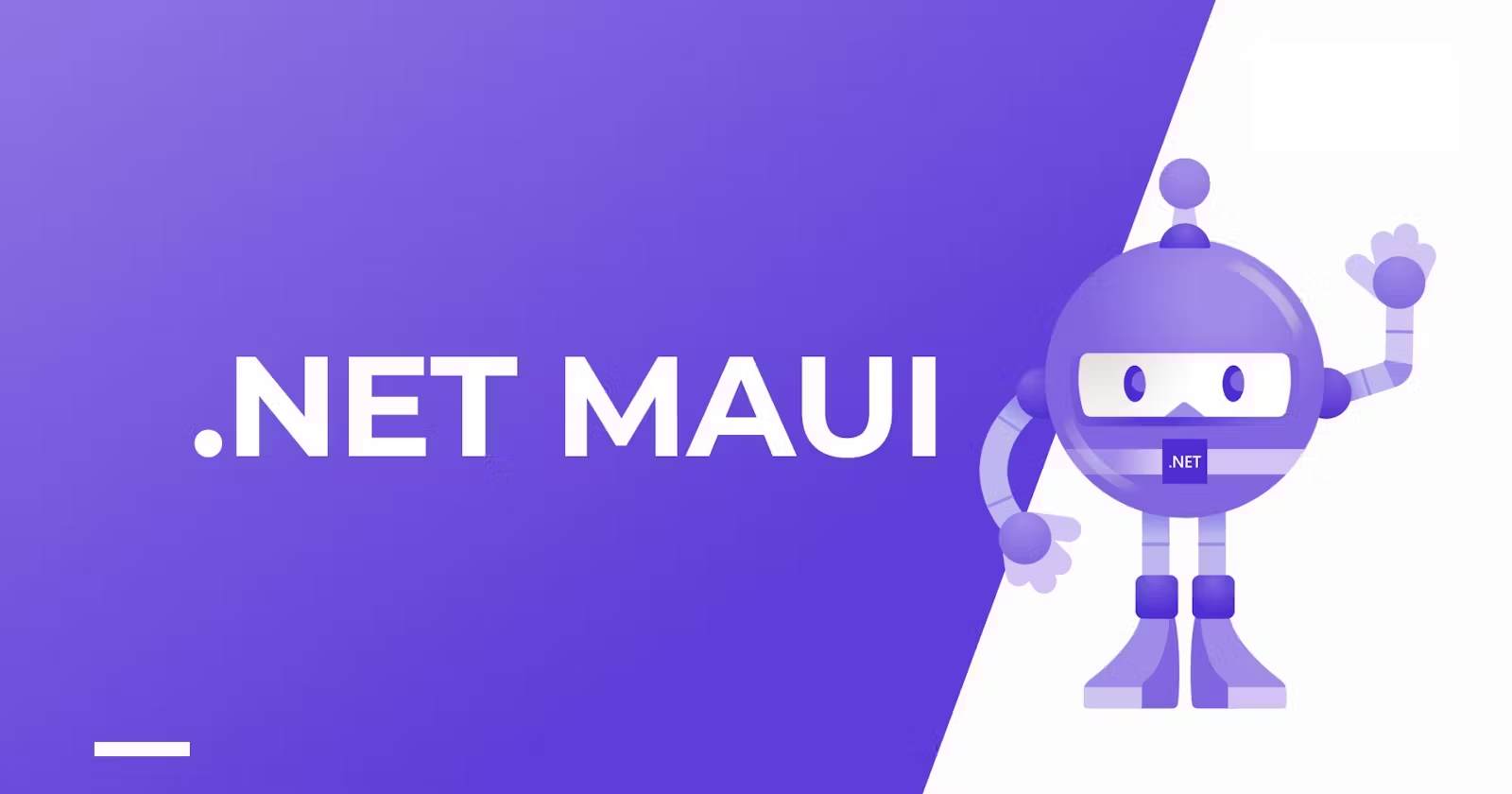
When a developer designs a client application one of the primary concerns is it's reach. We want our apps to be used by the maximum number of users possible. If one developed an application for a Windows machine, all the users who use devices like Mac, iOS and Android can’t use them. (It's different if you're rich enough to own multiple devices).
There are several ways we can deal with it.
Web vs Native
Probably the easiest way to get your application to maximum users is by building a Web App. A web app runs on a web browser. All the user needs to have a web browser and a web app will just run. Web Apps can be built using HTML, CSS and JS which is the most preferred and widely accepted abstraction to build UIs. Though we have countless frameworks like React, Angular and Vue.
So far, it’s good, we can build web apps and users can just use them if they have a browser. But that’s not the end of the story. If we want to take advantage of the features of native devices like sensors, native UI built-in platform features, etc., we can’t do that using web apps.
We need platform-specific native apps to take full advantage of the device like making phone calls, accessing files, geolocation and many more things.
The Problem
The real problem is the availability of many types of devices like Android, iOS, Mac, Linux, Windows etc. They differ on various levels. Some have different Operating systems while some other devices are completely different starting from the hardware architecture. Wars like iPhone vs Android and Windows vs Mac have been going on for a long time, I’m not going to get into that now.
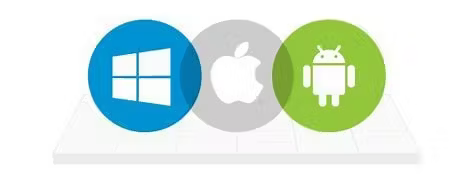
If we’re speaking from the user’s perspective having different choices of devices is not a problem but from a developer’s perspective developing apps for multiple platforms is the problem. Different platforms use different UI libraries and languages. To build native apps that fit into all the platforms, developers should learn all the specific languages and UI component libraries.
This is when Cross-Platform Apps help us greatly.
Cross Platform

Cross-Platform apps are applications that can be written once in a common language that can be run on multiple platforms. One of the popular cross-platform solutions for desktop apps is Electron built by GitHub. Electron can run on desktops like Windows, and Linux. Electron uses the web’s way of building UI using HTML, CSS, and JS which many of the developers already know. But if we take a deeper look at Electron it uses chromium to run the apps. Which is not so different from web apps. We cannot call it truly native.

Another widely known cross-platform framework is Flutter built by Google. Flutter doesn’t use a Markup Language for UI. UI is defined in code that is strange and JAVA Applet failed for this specific reason. Also, Flutter uses a language called Dart which is again less known to many developers.
.NET MAUI shines in many areas where other frameworks fall short.
What's so special about .NET
.NET is a unified development platform built and maintained by Microsoft. We can develop a wide range of applications on .NET. Be it Desktop, Web, Mobile or Cloud you can do it all on .NET. So .NET already has experience dealing with different platforms.
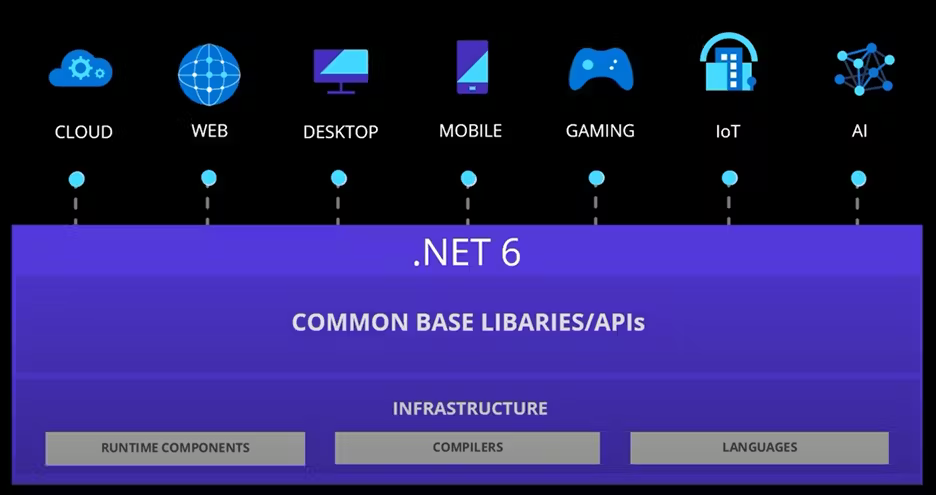
.NET uses well-known and maintained languages like C#. If you’re a fan of functional language you can use F# and there is also Visual Basic. .NET had native windows development for a long time in the form of WPF. It later introduced Xamarin Forms that use XAML for building UIs which is an extension of XML.
Using a Markup Language has been the best way to build User Interfaces among the developer community. So Xamarin forms would feel familiar to developers who had worked with HTML or XML. .NET had Xamarin forms for Android, and iOS to build their respective native apps.
.NET MAUI (Multi-Platform App UI) is the extension of Xamarin forms where all the devices share a common code base.
How does MAUI work?
MAUI looks just like any other .NET application. Its architecture is simple. We have XAML files that define the UI. And every XAML file has an attached C# file that contains logic which is called Code Behind. .NET MAUI uses a shared architecture where code, resources and business logic were all shared by different platforms.
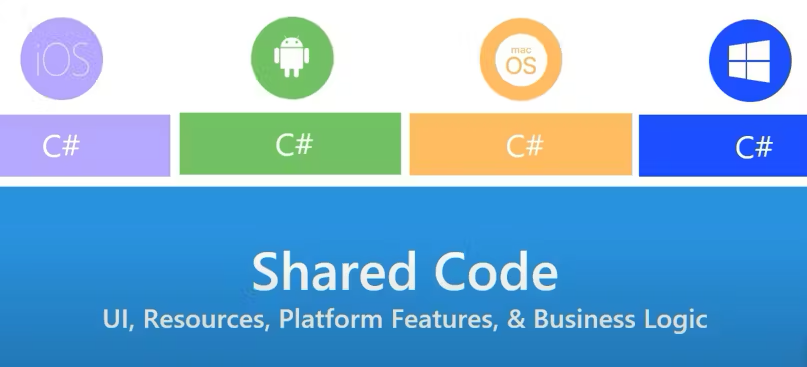
.NET MAUI utilizes all the advantages of the .NET environment like the usage of Models, Services, Dependency Injection and so on. We can also use MVVM (Model View ViewModel) architecture which works with data binding as its core feature just by installing a NuGet package. Yes, we can use third-party libraries in the MAUI application.
But as we discussed above, different platforms use different UI libraries, how can use a single codebase that defines UI that can work on all platforms? How does MAUI achieve this?
MAUI abstracts similar components of different platforms into a single component that can be used in UI definition when it’s compiled to the target platform it gets replaced with the component of its UI library.
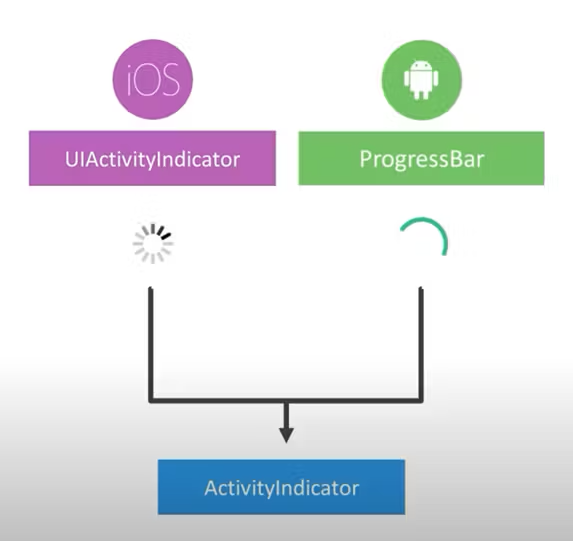
In this way, .NET achieves the development of cross-platform native applications with a wide range of UI components.

Developer Experience
Developer experience is also an important criterion for choosing a framework. With C# for logic and XAML for UI, there is a very less learning curve and it will be comfortable for developers to build applications. Also, some other important criteria while building user interfaces is the real-time live preview and the ability to inspect element tree.
.NET’s recommended IDE, Visual Studio contains many productivity tools that make developing with MAUI a breeze. It has XAML and C# hot reload that updates the application with code changes in real-time. It allows developers to debug applications with different devices and emulators.
According to me the XAML hot reload got to be the best feature here as we always need that continuous visual feedback while building UIs.
Pros
- Built on .NET Ecosystem where .NET developers can feel at home.
- Uses a markup language to build UI.
- Uses C# to define logic.
- MAUI Can be hybridized with the Blazor app to get web apps into the mix.
Cons
- Less Mature, released in mid-2022.
- Doesn’t support Linux as it has multiple distros and many desktop environments like Gnome, KDE etc. so its UI can’t be generalized.
Conclusion
.NET MAUI is a better way of building Cross-Platform Native Applications. .NET has a good community and is backed by Microsoft. Building multi-platform apps will be a breeze using MAUI and MAUI it can be integrated with Blazor where Native and Web can come hand in hand together.
MAUI might be the next revolution in native cross-platform applications.